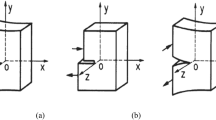Abstract
The research on the self-healing behavior of asphalt mixtures mainly focuses on the self-healing of fatigue load cracks; in contrast, less focus is placed on the self-healing of low-temperature splitting cracks. In this project, based on a low-temperature splitting test of asphalt mixtures and discrete element method (DEM) numerical simulation, a micro-mechanical model of the low-temperature splitting test was constructed. The crack evolution mechanism and self-healing performance of asphalt mixtures under different damage states were then analyzed. The research method was to divide the damage of the specimen in the DEM simulation into two types (fracture type 1, which corresponded to micro-damage in the splitting test, and fracture type 2, which corresponded to micro-cracks in the splitting test). Combined with the macroscopic damage–self-healing–macroscopic damage test, the relevant parameters of the DEM simulation were adjusted. A new index with which to evaluate the self-healing performance of asphalt mixtures was proposed via a simulation. The results of this study indicate that with the increase of the low-temperature load damage (cracks) of asphalt mixtures, the self-healing ability of asphalt mixtures decreases gradually. Moreover, it is found that the results of the DEM simulation for the analysis of the self-healing ability of asphalt mixtures for low-temperature splitting cracks are similar to the splitting test results. The research results reveal that the DEM can feasibly be used to simulate the self-healing process of asphalt mixtures, and has both theoretical and practical value for the in-depth study of microstructure damage and the self-healing of low-temperature splitting cracks of asphalt mixtures.
















Similar content being viewed by others
References
Bazin P, et al (1967). Deformability, Fatigue, and Healing properties of asphalt mixes. Proceedings of the Second International Conference on the Structural Design of Asphalt Pavements. Ann Arbor: International Society for Asphalt Pavements, 438–451
Baaj H, Mikhailenko P et al (2018) Recovery of asphalt mixture stiffness during fatigue loading rest periods. Constr Build Mater 158:591–600
Liu Q, Schlangen E, Ven MVD (2013) Induction healing of porous asphalt concrete beams on an elastic foundation. J Mater Civ Eng 25(7):880–885
Qiu J, Ven MVD, Molenaar A (2013) Crack-healing investigation in bituminous materials. J Mater Civ Eng 25(7):864–870
Haopeng Wang (2016). Design and Evaluation of Self-healing Conductive Asphalt Concrete. Dissertation, Southeast University, Nanjing, China.
Khiavi AK, Rasouli R (2018) Laboratory evaluation of loading frequency effects on HMA self-healing. Constr Build Mater 162:1–8
Zhu X et al (2020) Digital image correlation-based investigation of self-healing properties of ferrite-filled open-graded friction course asphalt mixture. Const Building Mater 234:117378
Cundall PA, el al, (1979) A Discrete Numerical Model for Granular Assemblies. Géotechnique 29(1):47
Collop AC et al (2004) Use of the distinct element method to model the deformation behavior of an idealized asphalt mixture. Int J Pavement Eng 5(1):1–7
You Z, Adhikari S, Dai Q (2008) Three-dimensional discrete element models for asphalt mixtures. J Eng Mech 134(12):1053–1063
You Z, Buttlar W (2006) Micromechanical modeling approach to predict compressive dynamic moduli of asphalt mixtures using the distinct element method. J Transp Res Board 1970(1):73–83
Kim H, Wagoner MP, Buttlar WG (2009) Numerical fracture analysis on the specimen size dependency of asphalt concrete using a cohesive softening model. Constr Build Mater 23:2112–2120
Xue B, Pei J, Zhou B et al (2019) Using random heterogeneous DEM model to simulate the SCB fracture behavior of asphalt concrete. Constr Build Mater 236:117580
Gao Hu, Yang X, Zhang C (2015) Experimental and numerical analysis of Three-point bending fracture of pre-notched asphalt mixture beam. Constr Build Mater 90:1–10
Zhou S, Zhu H, Ju JW, Yan Z, Chen Q (2017) Modeling microcapsule-enabled self-healing cementitious composite materials using discrete element method. Int J Damage Mech 26(2):340–357
Olsson E, Jelagin D, Partl M (2019) New discrete element framework for modelling asphalt compaction. Road Mater Pavement Design. https://doi.org/10.1080/14680629.2019.1633750
Gallego J, Val MAD, Contreras V, Páez A (2013) Heating asphalt mixtures with microwaves to promote self-healing. Constr Build Mater 42(42):1–4
Itasca Consulting Group Inc. (2014). PFC Documentation release 5.0. Minneapolis: Itasca Consulting Group Inc. USA.
Peng Y, Harvey J, Sun LJ (2017) Micromechanical modeling of aggregate homogeneity influence on the indirect tensile strength of asphalt mixtures using the three-dimensional discrete element method. J Mater Civ Eng 29(11):04017211
Kim H, Buttlar WG (2009) Discrete fracture modeling of asphalt concrete. Int J Solids Struct 46(13):2593–2604
Yang X, Dai Q, You Z, Wang Z (2015) Integrated experimental-numerical approach for estimating asphalt mixture induction healing level through discrete element modeling of a single-edge notched beam test. J Mater Civ Eng 27(9):04014259
Lei Wan (2016). Study on Asphalt Mixture Splitting Test Using Cohesive Zone Model and Three-Dimensional Discrete Element Method. Dissertation, Zhejiang University, Hangzhou, China.
García A, Noranbuena-Contreras J, Bueno M et al (2015) Single and multiple healing of porous and dense concrete. J Intell Mater Syst Struct 3:425–433
Yueming Yin (2019). The Effect of Permeation Properties of Concrete with Initial Defect. Dissertation, Northeast A&F University, China.
Chen R, Cui Y, Feng L (2019) Fatigue and self-healing properties of asphalt mixture under the aging effect. J Build Mater 22(03):487–492
Acknowledgements
The authors gratefully appreciate the support from the Province Key Laboratory of Road in Northeast Forestry University and the Foundations for the Project of the National Natural Science Foundation of China (E080703) and the Project of Heilongjiang Traffic and Transportation Department.
The authors declare that they have no conflict of interest.
Author information
Authors and Affiliations
Corresponding author
Additional information
Publisher's Note
Springer Nature remains neutral with regard to jurisdictional claims in published maps and institutional affiliations.
Rights and permissions
About this article
Cite this article
Zhang, H., Liu, H. & You, W. Microstructural behavior of the low-temperature cracking and self-healing of asphalt mixtures based on the discrete element method. Mater Struct 55, 18 (2022). https://doi.org/10.1617/s11527-021-01876-7
Received:
Accepted:
Published:
DOI: https://doi.org/10.1617/s11527-021-01876-7




